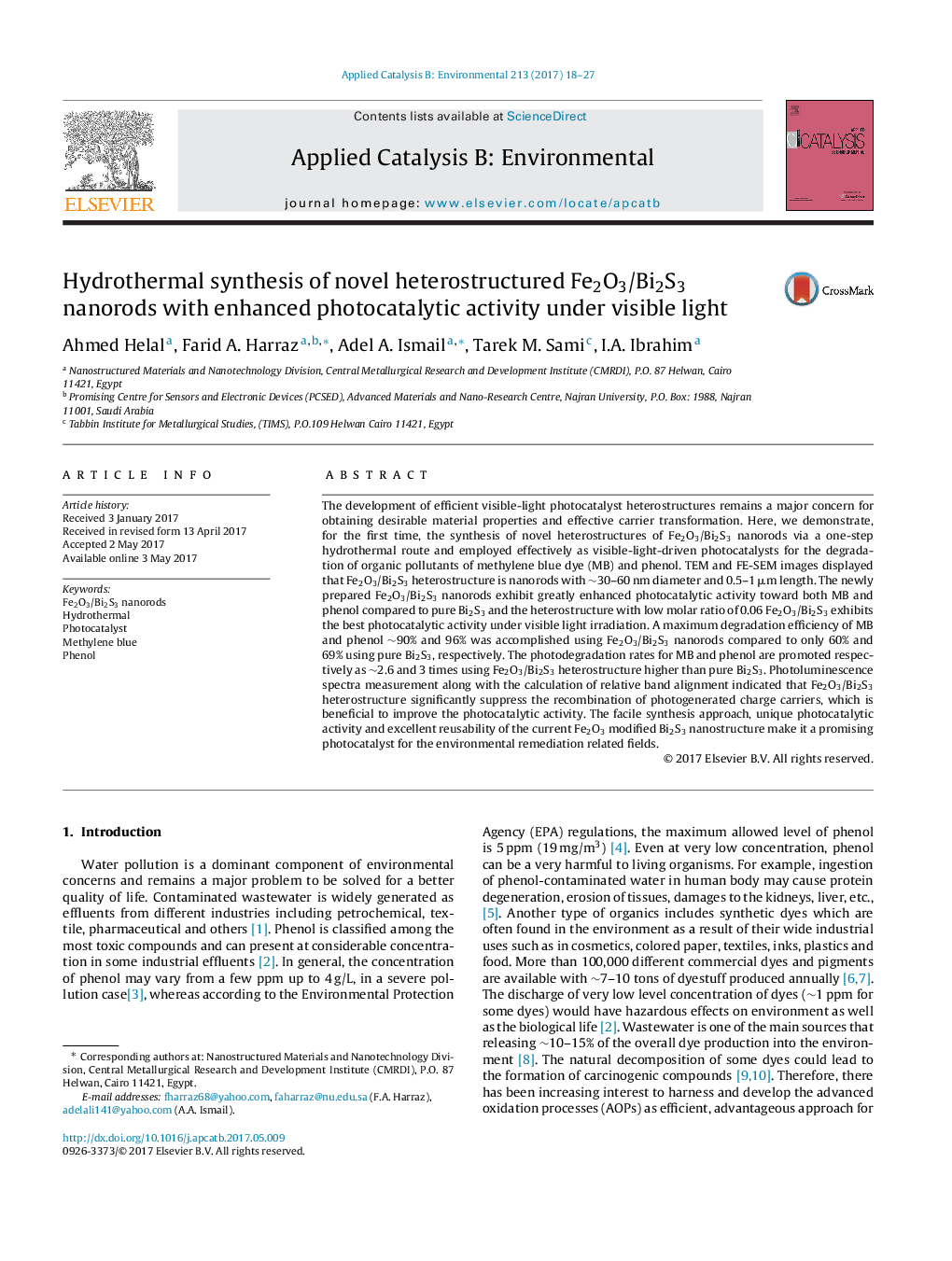| Article ID | Journal | Published Year | Pages | File Type |
|---|---|---|---|---|
| 6453869 | Applied Catalysis B: Environmental | 2017 | 10 Pages |
â¢One-step hydrothermal synthesis of novel heterostructured Fe2O3/Bi2S3 nanorods.â¢Efficient visible-light-driven photocatalyst for degradation of methylene blue and phenol.â¢The Fe2O3/Bi2S3 heterostructures led to an efficient separation of (eâ) and (h+).â¢The k values using Fe2O3/Bi2S3 heterostructures are â¼3 times larger than pure Bi2S3.â¢The current Fe2O3/Bi2S3 heterostructures exhibit excellent stability and reusability.
The development of efficient visible-light photocatalyst heterostructures remains a major concern for obtaining desirable material properties and effective carrier transformation. Here, we demonstrate, for the first time, the synthesis of novel heterostructures of Fe2O3/Bi2S3 nanorods via a one-step hydrothermal route and employed effectively as visible-light-driven photocatalysts for the degradation of organic pollutants of methylene blue dye (MB) and phenol. TEM and FE-SEM images displayed that Fe2O3/Bi2S3 heterostructure is nanorods with â¼30-60 nm diameter and 0.5-1 μm length. The newly prepared Fe2O3/Bi2S3 nanorods exhibit greatly enhanced photocatalytic activity toward both MB and phenol compared to pure Bi2S3 and the heterostructure with low molar ratio of 0.06 Fe2O3/Bi2S3 exhibits the best photocatalytic activity under visible light irradiation. A maximum degradation efficiency of MB and phenol â¼90% and 96% was accomplished using Fe2O3/Bi2S3 nanorods compared to only 60% and 69% using pure Bi2S3, respectively. The photodegradation rates for MB and phenol are promoted respectively as â¼2.6 and 3 times using Fe2O3/Bi2S3 heterostructure higher than pure Bi2S3. Photoluminescence spectra measurement along with the calculation of relative band alignment indicated that Fe2O3/Bi2S3 heterostructure significantly suppress the recombination of photogenerated charge carriers, which is beneficial to improve the photocatalytic activity. The facile synthesis approach, unique photocatalytic activity and excellent reusability of the current Fe2O3 modified Bi2S3 nanostructure make it a promising photocatalyst for the environmental remediation related fields.
Graphical abstractDownload high-res image (173KB)Download full-size image
